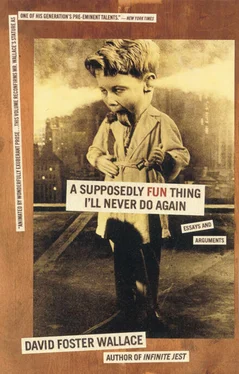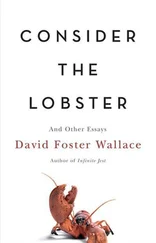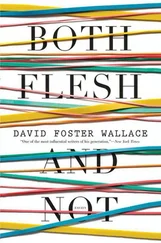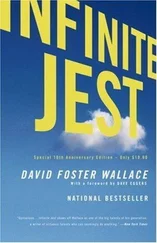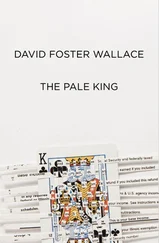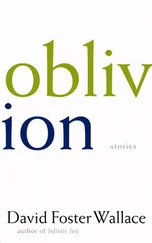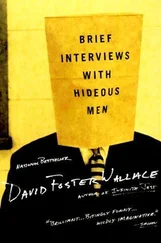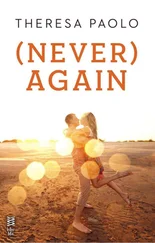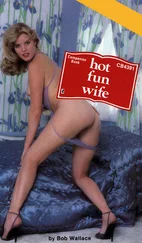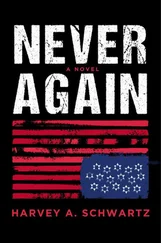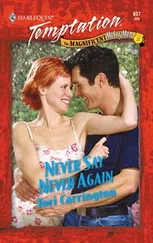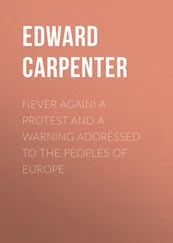A child’s world turns out to be very small. If I’d been just a little bit better, an actual regional champion, I would have qualified for national-level tournaments, and I would have gotten to see that there were fourteen-year-olds in the United States who were playing tennis on a level I knew nothing about.
My own game as a junior was a particular type of the classic defensive style, a strategy Martin Amis describes as “craven retrieval.” I didn’t hit the ball all that hard, but I rarely made unforced errors, and I was fast, and my general approach was simply to keep hitting the ball back to the opponent until the kid screwed up and either made an unforced error or hit a ball so short and juicy that even I could hit a winner off it. It doesn’t look like a very glamorous or even interesting way to play, now that I see it here in bald retrospective print, but it was interesting to me, and you’d be surprised how effective it was (on the level at which I was competing, at least). At age twelve, a good competitive player will still generally miss after four or five balls (mostly because he’ll get impatient or grandiose). At age sixteen, a good player will keep the ball in play for more like maybe seven or eight shots before he misses. At the collegiate level, too (at least in Division III), opponents were stronger than junior players but not markedly more consistent, and if I could keep a rally going to seven or eight shots, I could usually win the point on the other guy’s mistake. 49
I still play — not competitively, but seriously — and I should confess that deep down somewhere inside I still consider myself an extremely good tennis player, real hard to beat. Before coming to Montreal, I’d seen professional tennis only on television, which as has been noted does not give the viewer a very accurate picture of how good pros are. I thus further confess that I arrived in Montreal with some dim unconscious expectation that these professionals — at least the obscure ones, the nonstars — wouldn’t be all that much better than I. I don’t mean to imply that I’m insane: I was ready to concede that age, a nasty ankle injury in ’91 that I haven’t bothered to get surgically fixed yet, and a penchant for nicotine (and worse) meant that I wouldn’t be able to compete physically with a young unhurt professional; but on TV (while eating junk and smoking) I’d seen pros whacking balls at each other that didn’t look to be moving substantially faster than the balls I hit. In other words, I arrived at my first professional tournament with the pathetic deluded pride that attends ignorance. And I have watched the Qualies — not even the main draw yet, mind you, but the competition between 64 fairly low-ranked world-class players for the eight qualifying slots in the Canadian Open field — with a mixture of awe and sad surprise. I have been brought up sharply. I do not play and never have played the same game as these low-ranked pros.
The craven game I spent so much of my youth perfecting would not work against these guys. For one thing, pros simply do not make unforced errors — or at any rate they make them so rarely that there’s no way they’re going to make the four unforced errors in seven points necessary for me to win a game. For another thing, they will take any shot that doesn’t have simply ferocious depth and pace on it and — given even a fractional moment to line up a shot — hit a winner off it. For yet another thing, their own shots have such ferocious depth and pace that there’s no way I’d be able to hit more than a couple of them back at any one time. I could not meaningfully exist on the same court with these obscure, hungry players. Nor could you. And it’s not just a matter of talent or practice. There’s something else.
Monday commences the main draw, and the grounds are packed. Most of the Qualies’ players are in planes high above some ocean somewhere by now.
Going to a major ATP tournament is like a cross between going to a major-league ball game and going to the fair. You can buy a Grounds Pass and wander from match to match, sampling the fare. You can also buy specific expensive tickets for big-name matches in the Stadium and Grandstand. In the early rounds, these headline matches tend to feature the high seeds and household names — Agassi, Sampras, Chang — against main draw also-rans like Jacob Hlasek. 50
Being a tennis spectator is different from being at a baseball game, though. Whether crowd-noise or — movement is any more distracting to someone getting ready to serve than it is to someone getting ready to shoot a freethrow, players and tournaments act like it is, and play itself is supposed to be conducted in as close to funereal silence as possible. 51If you’ve got a seat for a Stadium match, you can leave and return only during the break that happens after every odd-numbered game, when the players get to sit under red umbrellas for a second. Ushers cordon off the exits during play, and a concession-laden mass of spectators always stretches from just behind these ropes all the way down the slanted ramps into the Stadium’s bowels, waiting to get back in.
Stade Jarry has the same sort of crumbling splendor that characterizes a lot of Montreal. The Stadium/Grandstand structure used to house the Expos before Montreal built Olympic Stadium, and it’s grimy and old and creaks alarmingly when crowds enter or exit. The “Players’ Lounge,” which at most tournaments is a temperature-controlled salon with plush chairs and video games and multiple massage rooms, is at Stade Jarry just a big tent with canvas partitions around the locker room, no video games, just one TV, and no AC. The parking lots are inadequate and tufted with crabgrass, and the easements between courts and facilities on the grounds are either dirt or some kind of blacktop that’s decayed back to the point where it’s just about dirt too. The whole thing’s due to be torn down after the ’95 Open’s over, and a new Flushing Meadow-type tennis complex is going to be built by Tennis Canada 52and a whole bunch of the corporations whose names are on the Stadium’s brothelish bunting.
The tournament site’s surrounding Parc du Jarry, on the other hand, is exquisite. From the top row of the Stadium’s seats you can look out in the sunshine and see rolling grass, a public pool, a pond replete with stately fowl. In the distance to the north is the verdigrised dome of a really big church; to the west is the EKG skyline of downtown Montreal.
But so you can wander between matches, stand around watching the practice courts, join the lines for the restrooms, or elbow-fight with little kids and autograph hunters outside the Players’ Tent. Or you can buy concessions. There’s a booth outside one entrance to the Stadium Court that sells only Evian water. There’s Spanish peanuts and fudge you can buy by the gram and eat or buy by the kilo and take home. 53The whole Stade Jarry grounds have a standard summer-touristic reek of fried foods — French fries in cups, nachos, and in paper trays small spiraled fried things I decline to examine closely. There are two booths for Richard D’s Bars, a kind of Quebecois cognate for Dove Bars (and not quite as good, but pretty good). There are only two men’s rooms open to the public, 54and the lines for both always resemble a run on a midsize branch bank. There’s the Rado ®Smash Booth, where for $3.0 °Canadian you can step inside a large cage with a much-handled racquet and hit a serve into a frayed-looking net and have the speed of your serve appear on a big liquid-crystal display above the cage. Most of the people availing themselves of the Rado ®Smash Booth are men, whose girlfriends watch dutifully as the men step inside the cage with the same testosteronic facial expression of men at fairs testing their marksmanship or sledge-swinging prowess — and the American men tend to be very pleased and excited at the displayed speed of their serve until it dawns on them that the readout’s in kph instead of mph. There are hot dogs and hamburgers and the ambient sizzle-sound of same over near the Grandstand entrances. Just east of the Grandstand and the second men’s room, there’s a whole sort of cafeteria in a big tent with patio tables arrayed on Astroturf that’s laid over a low deck of extremely flimsy boards so that your table trembles and your Evian bottle falls over every time somebody walks by. Starting on Monday there are a lot of Canadian girls in really short tight shorts and a lot of muscle-shirted Canadian boyfriends who scowl at you if you react to the girlfriends in the way the girlfriends’ tight shorts seem designed to make anyone with a healthy endocrine system react.
Читать дальше
